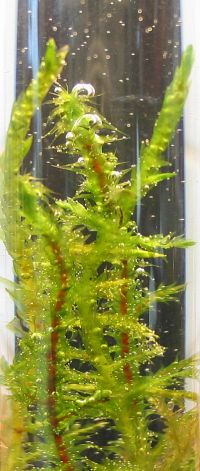Difference between revisions of "Algae"
(Emergency Light) |
(CO2 eating algae) |
||
| Line 26: | Line 26: | ||
===Emergency Light=== | ===Emergency Light=== | ||
| − | Special algae produce light. <ref>[http://www. | + | Special algae produce light.<ref>[http://www.wikihow.com/Grow-Bioluminescent-Algae-at-Home How to Grow Bioluminescent Algae at Home]</ref> If placed in a sun-lit room, it produces oxygen and proteins during the day. At night it consumes part of the previously produced substances and gives a little light for the settlers, not for other plants to grow. I can imagine those lamps can be useful as an emergency illumination, or may be, if regularly carried towards the living quarters in the evening, as an alternative lighting technology for the living quarters. |
| + | |||
| + | ===CO2 eating algae=== | ||
| + | Certain types of algae can feed off of organic carbon as well as sunlight.<ref>[http://www.geek.com/news/biochemist-creates-co2-eating-light-that-runs-on-algae-1487699/ Biochemist creates CO2-eating light that runs on algae]</ref> They consume CO2 and produce oxygen. This works even in the dark and can help to clean the air in the Martian settlement. | ||
==Open Issues== | ==Open Issues== | ||
Revision as of 00:20, 19 May 2013
Algae are a diverse group of organisms, ranging from ten meter long kelp to unicellular dinoflagellate. These organisms are a vital link in many food chains on Earth. The farming of algae is called algaculture.
Contents
Cultivation of Algae
Open Pools
Open pools are similar to the natural environment of many species of algae.
Aerated Tanks
Aerated tanks provide a controllable environment which can be tuned to the exact conditions needed by the target species.
Uses of Algae
Food
Algae are an excellent source of vitamins, oils, fatty acids, and minerals, and are eaten in many parts of the world. They can be grown in tanks filled with waste water, and aerated with CO2 from the martian atmosphere. A welcome side effect is the release of free oxygen.
Fertilizer
Algae is currently used on Earth as a fertilizer.
Waste Water Treatment
Algae digest excess organic molecules and CO2.
Chemosynthesis
Certain species of algae can be grown to produce hydrogen and hydrocarbons.
Emergency Light
Special algae produce light.[1] If placed in a sun-lit room, it produces oxygen and proteins during the day. At night it consumes part of the previously produced substances and gives a little light for the settlers, not for other plants to grow. I can imagine those lamps can be useful as an emergency illumination, or may be, if regularly carried towards the living quarters in the evening, as an alternative lighting technology for the living quarters.
CO2 eating algae
Certain types of algae can feed off of organic carbon as well as sunlight.[2] They consume CO2 and produce oxygen. This works even in the dark and can help to clean the air in the Martian settlement.
Open Issues
- What is known about the efficiency factor of energy transformation from light energy to chemical energy? We need a calculation and a comparison with other food crop.







